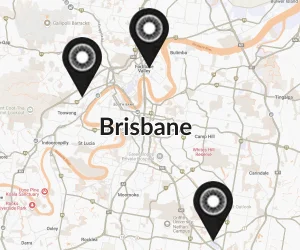
Using a computer after PRK surgery: What to expect and how to protect your eyes
If you're planning to have PRK surgery or you're in the early stages of recovery, you're probably wondering when you can get back to work or use screens again. In today’s world, avoiding a computer for long isn’t easy—but taking the right steps early on can support your healing and help you get the best results.
This blog explains how PRK affects your ability to use a computer, what you should avoid in the first few days, and how to ease back into screen use.
To learn more about the procedure, visit our PRK surgery Brisbane page. You can also check your suitability for PRK by taking our self-test.
When can you start using a computer after PRK surgery?
After PRK (photorefractive keratectomy), most patients are advised to avoid screens for at least the first 24 to 48 hours. This includes phones, computers, and TVs. During this time, your eyes are healing and are more sensitive to light and strain.
After 48 hours, you can begin to use a computer again—but only in short sessions. It’s best to gradually increase your screen time over the first week.
How PRK surgery affects computer use in the first few days
PRK works by removing the outer layer of your cornea and reshaping the tissue underneath to correct your vision. Unlike LASIK, which creates a corneal flap, PRK involves surface healing. That makes early care even more important.
In the first few days, you might experience:
- Blurry vision
- Light sensitivity
- Dry eyes
- Eye fatigue.
All of these can make screen use uncomfortable. Trying to use a computer too soon may lead to increased strain and slower healing.
How long should you limit computer use after PRK?
Every person heals at a different pace. Here’s a general timeline:
- Days 1–2: Avoid all screens completely
- Days 3–5: Limit screen time to short sessions (5–10 minutes), with regular breaks
- Days 6–7: You may begin to return to light computer work, using eye drops often
- Week 2 onward: Gradually resume more regular screen use if your vision is stable and comfortable.
Returning to work after PRK surgery: Managing computer use
If your job involves screen time, you may need a few days off work. Some people take a full week, while others feel comfortable returning after a few days with modified duties.
Speak with your surgeon about your job and work environment so they can recommend the best recovery plan for you.
Tips for reducing eye strain when using a computer after PRK
Once you're cleared to use a computer, these tips can help reduce strain:
- Use dark mode or reduce screen brightness
- Increase text size and contrast
- Take breaks every 15–20 minutes
- Use the 20-20-20 rule: every 20 minutes, look at something 20 feet away for 20 seconds
- Sit in a softly lit room to reduce glare.
Your comfort will guide you—if your eyes feel dry or sore, it’s time to rest.
Protecting your eyes after PRK surgery
Besides limiting computer use, here are other important tips:
- Wear sunglasses outdoors to protect from UV rays
- Avoid rubbing your eyes, especially in the first week
- Stay hydrated and keep up with your prescribed eye drops
- Don’t return to high-impact activities too soon.
The early days matter most for your long-term results. It’s worth slowing down for a week or two to protect your vision.
Eye drops and screen time
Eye drops are an essential part of PRK recovery. You’ll be given medicated and lubricating drops to reduce inflammation and keep your eyes moist.
Using a computer can make your eyes drier, so it’s important to:
- Apply drops as instructed
- Keep them nearby during work or screen time
- Blink often, especially during long sessions.
Final Thoughts: Let Your Eyes Guide You
Using a computer after PRK surgery is possible—but it needs to be done with care. For the first few days, rest your eyes and avoid screens. Then, slowly reintroduce computer use with plenty of breaks and hydration.
The goal is long-term clarity and comfort. Taking it slow now helps you get there faster.
Considering PRK surgery?
ARE YOU SUITABLE?
Check your laser eye surgery suitability online with our free LASIK self-test
OUR MOST POPULAR PROCEDURES

Hi, I’m Dr. Matthew Russell, a laser and cataract surgeon
HI I’M DR. MATTHEW RUSSELL A LASER EYE AND CATARACT SURGEON
With over 15 years of experience, I enjoy the privilege of helping patients of all ages reclaim clear vision or preserve it for as long as possible.
Vision correction and high-precision cataract surgery hinge on the expertise and skill set of the provider who also has access to the most precise tools for the job. Ophthalmic surgeons like me know how to make treatment safe, comfortable and positive for the patient. They know how to minimise the risk of complications and maximise successful outcomes.
I have a passion for helping my patients enjoy the clear, high-definition vision they need to live rich and active lives. Now, I have hand-picked a team of professionals that share my passion and commitment to exceptional care.
Dr. Matthew Russell
MBChB, FRANZCO






